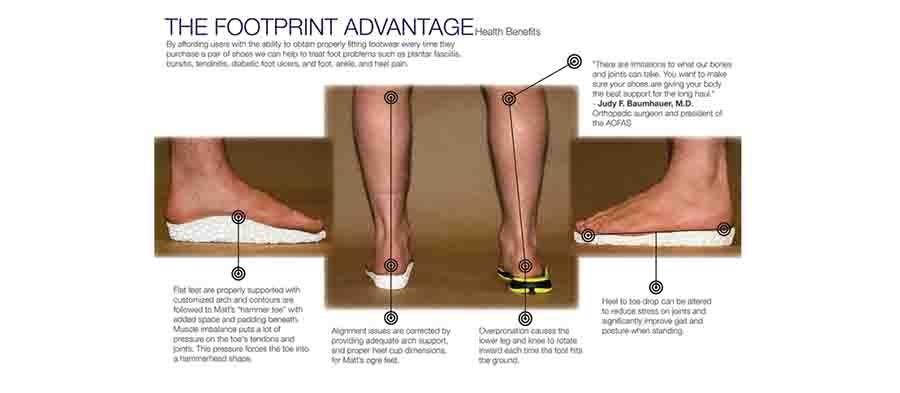3D printing has helped researchers develop major advances in the healthcare industry, from 3D printed bone replacements, customized 3D printed surgical guides, dental work and even 3D printed models used in surgical pre-planning. And now a pair of Industrial Design students at Philadelphia University’s Masters Program are using 3D scanning and 3D printing to prevent medical problems of the foot, by creating customized footwear that is made to conform exactly to the wearer’s needs. Their thesis project is called FOOTPRINT: 3D Printed Custom Algorithmic Footwear and their goal is to produce cutting edge shoes by incorporating 3D scanning, algorithmic model development, rapid manufacturing, and advanced textile technologies.
Matt Flail and Tim Ganter tell 3DPrint.com that they chose their thesis project after noticing that there are a lot of problems with the way that we make, size and use even our most advanced footwear options. The reality is, that even the best shoes on the market tend to be designed for a general user, not a specific user. Because no two feet are ever exactly alike, not even our own feet, the standard sizing system that is currently used, is incredibly insufficient. Shoes and healthy feet are such an important part of modern life, it doesn’t make a lot of sense to continue to not produce them for specific users, almost as if they were prosthetic devices. Because even the best shoe on the market allows for an inefficient fit that leads to improper alignment with the wearer’s body, this can lead to or exacerbate joint and muscle problems in the ankles, knees, hips, and back.
The goal of Flail and Ganter’s thesis project was to redesign and reconceive how footwear is made from top to bottom, changing not only the sizing methods, but the manufacturing and materials being used as well. They studied some of the highest quality sport footwear on the market, including the NIKE Flyknit and ADIDAS Primeknit lines of sport shoes. They also consulted with a series of podiatrists and footwear experts to determine the most efficient and effective method of properly fitting shoes.
These insights led the duo to 3D scanning using photogrammetry software and structured light scanning which would create detailed 3D models of a specific user’s foot.
The three criteria that they decided were essential for their design process was to rethink manufacturing methods with a reduction of material waste and the elimination of costly molds and tooling. They also want to create a customized fit based on the exact shape, size and support needs of the user’s foot. And finally they wanted to reduce or completely eliminate the excessive waste created by modern manufacturing methods.
While developing FOOTPRINT, Flail and Ganter tested multiple 3D printable materials and 3D manufacturing methods, eventually deciding that a selective laser sintering (SLS) process gave them the best results for their project requirements, using powdered nylon based DuraForm Flex 3D printing material for the insole and support structure, and WHOLEGARMENT knitting process that uses steam to shape the shoe to a specific person’s foot.
While their initial research was directed at sport or running shoes, it wasn’t far into the prototyping process that Flail and Ganter discovered that customized shoes of this nature would be beneficial for all types of footwear. Having recently received an educational grant from Shapeways, the pair now has more research funds available to them and will continue to develop alternative concepts and shoe structures. You can read more about the FOOTPRINT thesis over on Behance.

